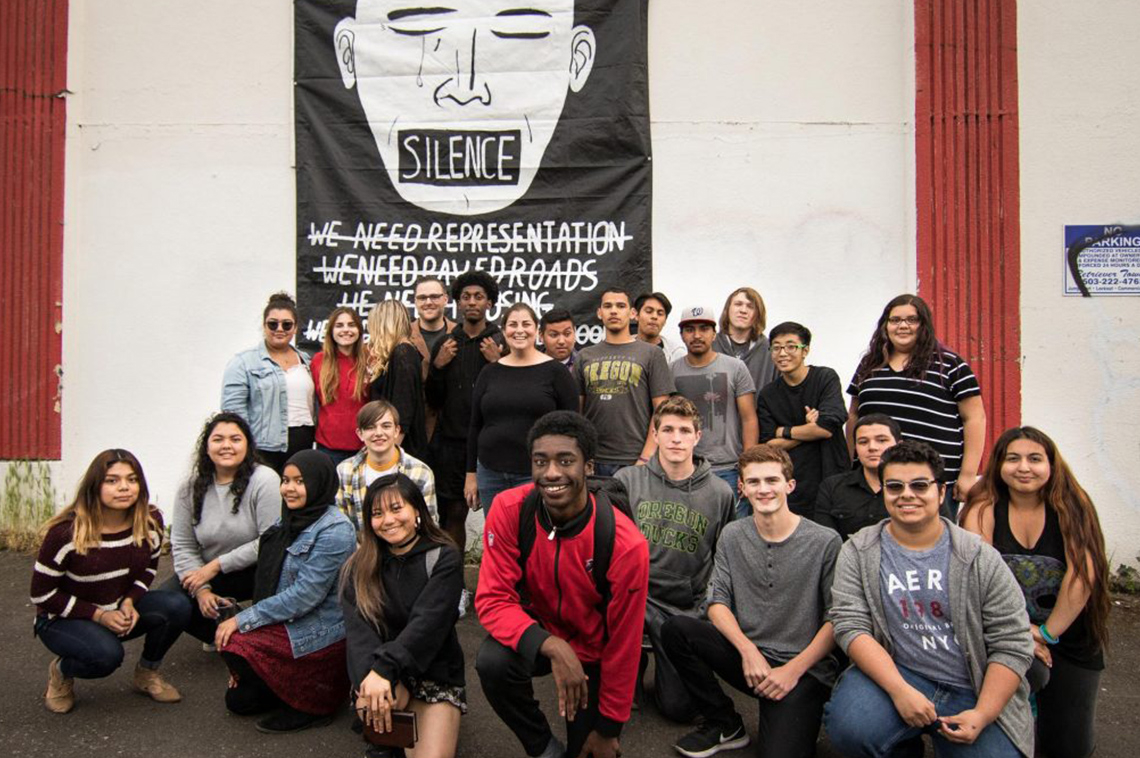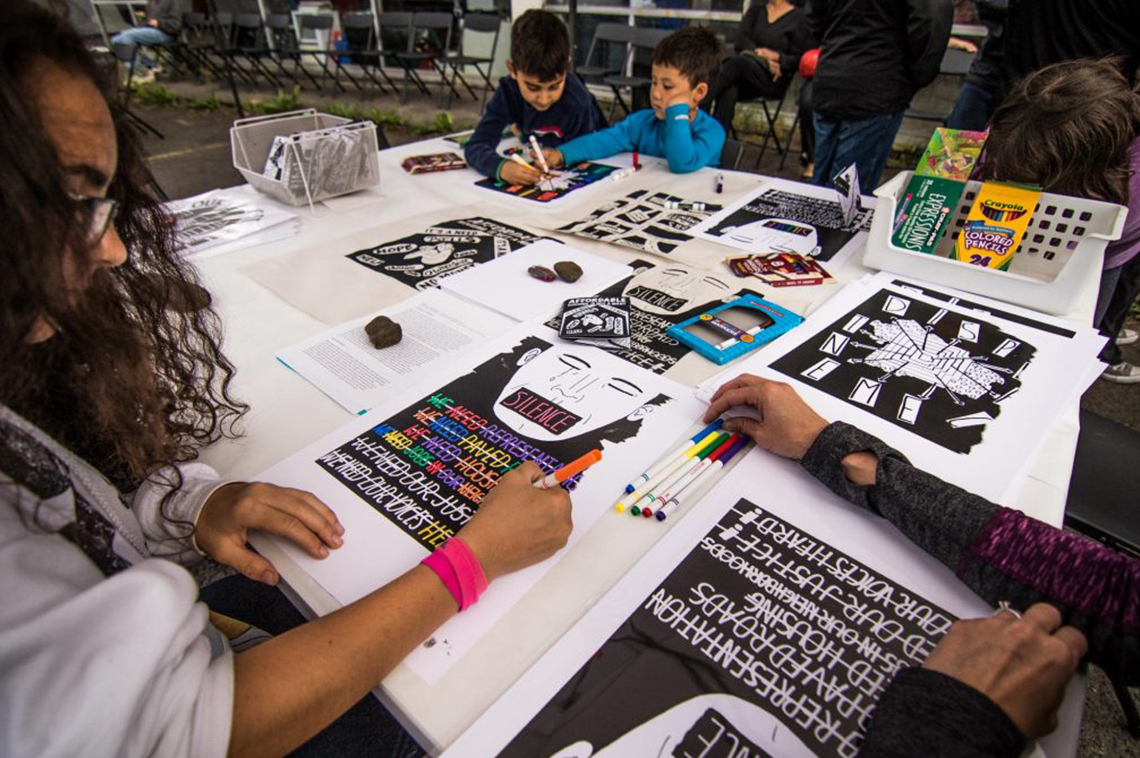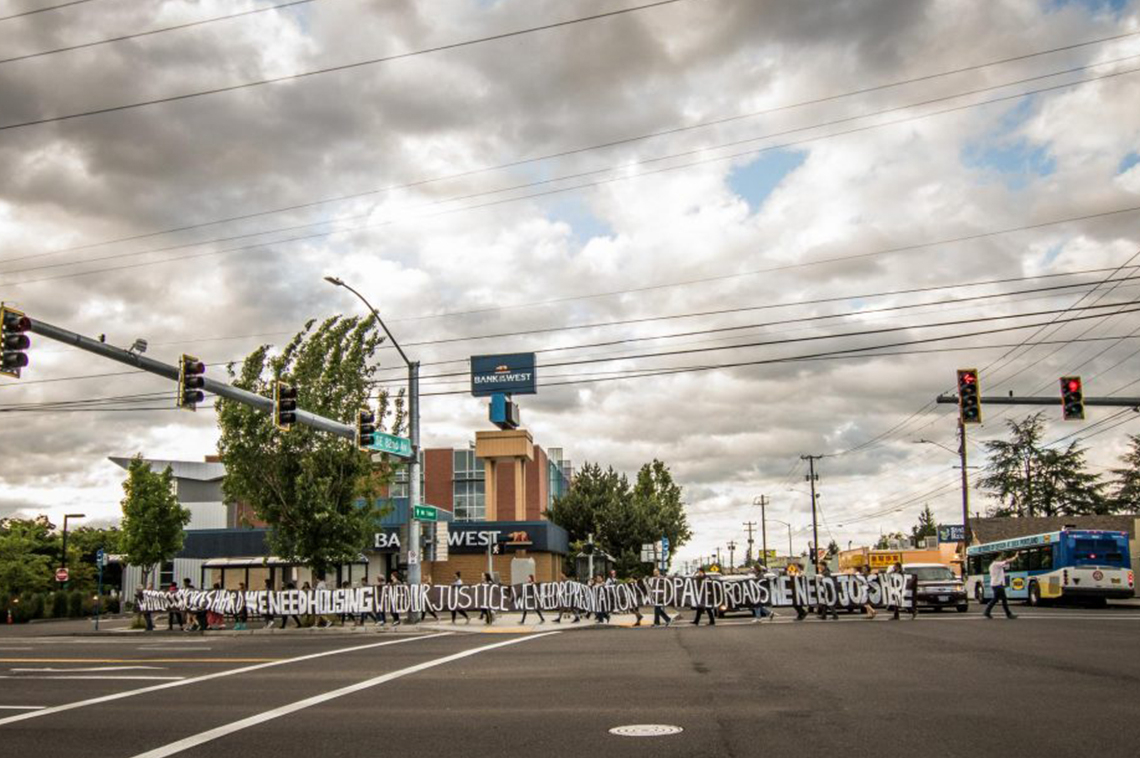


When roughly 14 miles of a bus rapid transit line was proposed along Division Street in East Portland, the effort was greeted with interest in an often-neglected area of the city, but also concern about the possibilities of displacement and development poorly engaged with the unique local culture. To address those concerns, community members throughout the Jade and Division Midway districts used arts and culture strategies to recalibrate the plan to better serve community needs.
When we consider the role of art in transportation, most people probably first think about artistic contributions to the physical environment like creative streetscaping, transit stations, or other parts of the built environment. But art can be just as vital to the process of planning & building transportation projects.
In Portland, Oregon, arts-based engagement is helping to build dialogue between local agencies and the community to ensure that a new planned bus rapid transit (BRT) line serves the residents of ethnically diverse, low-income districts in the eastern part of the city. The Asian Pacific American Network of Oregon (APANO) and the Division-Midway Alliance (DMA), two nonprofits located respectively in the Jade and Midway Division districts along Division street in Portland, have been empowering residents, businesses, and students to actively shape the evolving BRT project through arts and culture.
Curiosity and Scrutiny
Home to many immigrant and refugee families that give this area a distinct ethnic and cultural diversity, the Jade and Division Midway districts have historically lacked strong, safe, transportation infrastructure. However, in recent years citizens have also witnessed development that has led to displacement throughout many communities in Portland. So Jade and Division Midway community members met the BRT proposal with curiosity but also scrutiny.
As stated in the Jade Midway District Arts Plan: "The BRT project will impact local businesses, and a city-wide housing emergency is driving housing costs up. Housing complexes in the district have changed private owners and renters experienced rent increases. Our work remains to address these challenges to continue to root the community in place."
Creative tactics, spearheaded by APANO and DMA, have created a platform for the community to advocate, express, and communicate their desires related to this new transportation proposal to ensure that the final project best serves their needs, reflect what makes their community unique, and is embraced by the people it serves.
Hip Hop and performance
For example, neighborhood artist Solomon Starr and local youth used hip hop to document the experiences of southeast Portland community members taking mass transit in Division Street Stories - where urban music meets community organizing. The project paired opportunity youth and high school students with Hip-Hop Educators to document through interviews on film and audio, the real life experiences of SouthEast Portland community members taking mass transit. After reviewing the testimony of community members the very students conducting the interviews will create original works of Hip-Hop, R&B, Pop and Poetry in response to what was described by community members in their stories.
To further build local capacity to do more of this kind of creative engagement with the community, these organizations built a placemaking steering committee comprised of eight civic, nonprofit, and government members to guide creative placemaking plans in the district, and ultimately strengthen coalitions. APANO also launched a creative placemaking project grant program that is funding projects in the district led by cultural workers. These cultural workers then participate in a cohort known as the Resident Artist Collaborative, in which they receive training to help engage the community in the production of new artworks.
By building public awareness and political pressure through arts and cultural projects, APANO and the Division Midway Alliance helped to pause construction of the BRT planning process until the Portland Bureau of Transportation, TriMet, Metro, and others made formal community benefits agreements and agreed to mitigation measures to ensure that this vital new transit service would serve the community’s needs.
This is an edited version of a post from Transportation for America on September 12th highlighting a case study that will be featured in our upcoming field scan on arts, culture and transportation, in partnership with T4A. The field scan is intended to examine the ways in which transportation professionals are exploring new creative, collaborative and contextually-specific approaches to engage the community in more inclusive processes for planning and building new transportation projects. You can read more about our other field scans here.





